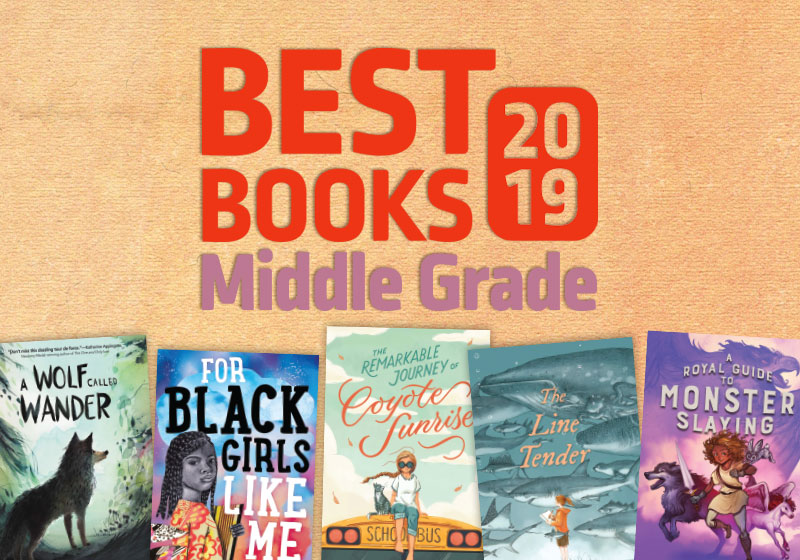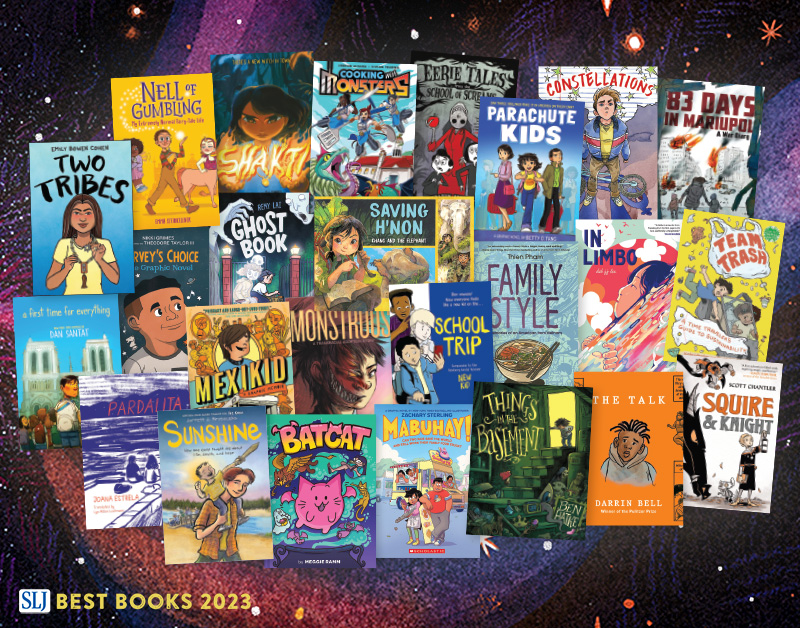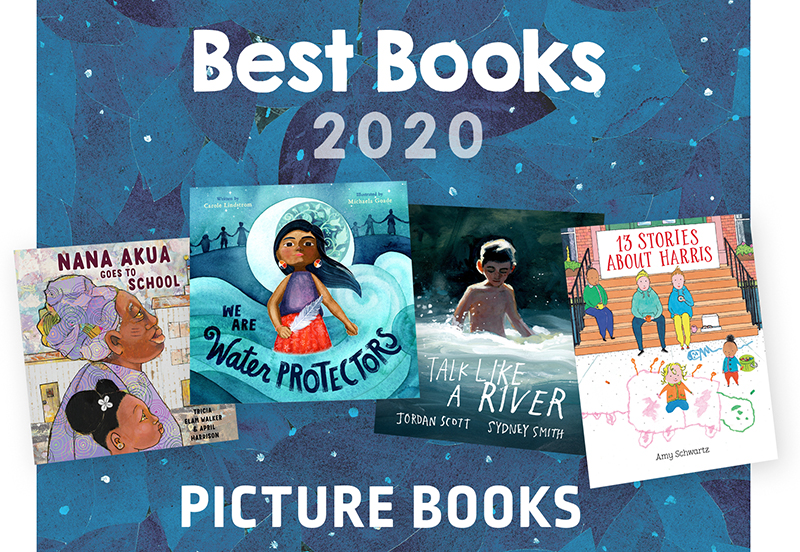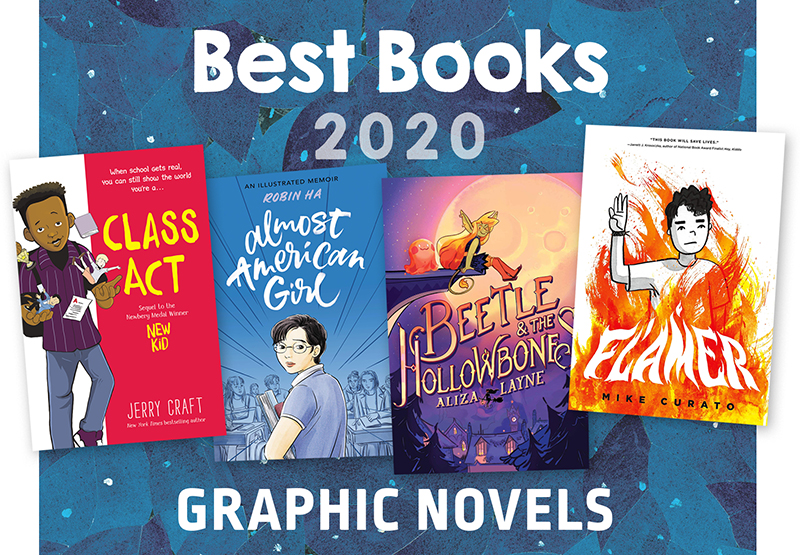Turning Frowns Upside Down at The Smile Shop

The Smile Shop
Written and Illustrated by Satoshi Kitamura
Published by Peachtree, 2021
ISBN #978-1-6826-3255-0
Grades PreK and up
Book Review
“I am so excited,” starts the first page of Satoshi Kitamura’s picturebook, The Smile Shop. Set in a crowded open-air market of an urban center, this narrative follows a young boy, who for the very first time in his life, is going to purchase something with the coins he has saved. What will he buy? Kitamura’s illustrations created from pen, ink, watercolor, and gouache show the boy in a vibrant blue sweater and red scarf. The boy stands out in the midst of an international community of people and vendors, who are depicted in a muted palette of colors. No matter whether he is gazing at pastries or trying-on hats, the boy is the focal point of each page-spread such that the illustrations drive the narrative. However, the shade of the illustration changes when a skateboarder takes to the sidewalk and collides with the boy and his handful of coins. Readers young and old are sure to empathize with the boy when he realizes that all but one of his coins slipped from his grip and into the storm drain. Fortunately, all is not lost. Kitamura’s charming combination of illustrations and narrative yields a satisfying conclusion once the boy enters The Smile Shop. This feel-good book will make readers grin from ear to ear. It would be a delightful addition to classroom explorations about money, communities, independence, and/or empathy.
Teaching Invitations
Note our Readers: These ideas are not meant to be prescriptive. Choose one. Choose more. It’s up to you. Some ideas are bigger and will take a number of days to complete. Some are shorter. You can also choose to complete one part of a teaching idea, but not the whole thing. It’s up to you!
ADVERTISEMENT
ADVERTISEMENT
How much does it cost?
The opening pages of this picturebook show the boy with a handful of coins in varying sizes and metal colors. On his journey through the open-air market, he stops to admire items such as an apple pie in a bakery window, an array of clocks at a specialty shop, a horn at music shop, a brightly illustrated book on a table of used titles, a hat from a clothier, and a toy boat, which the boy acknowledges is “quite expensive.” While reading with the children, stop to ask if they think the boy has enough money to purchase each of the items. Discuss the potential difference in the cost of new items versus used items. Then, invite the children to investigate the cost of such items locally. For example, consult a grocery or bakery advertisement to determine the cost of an apple pie. Examine other multimodal resources to determine the costs of other items. Alternatively and/or additionally, gather props and establish an area in the classroom for the children to engage in sociodramatic play at the marketplace. Some could take up the roles of shoppers. Others might be vendors. As part of their play, welcome students to establish their own businesses, which may differ from those depicted by Kitamura.
What would you buy?
In this story, the boy wants to buy something for himself for the very first time. Welcome children to share their own stories, experiences, and/or hopes around using coins to buy or pay for something of their choice. Children’s experiences with physical money could be limited depending on their family and community contexts as some adults primarily rely on cashless payment systems. Thus, it could be helpful to explore where children might use coins (or tokens) in their local school communities, which could include vending machines, laundromats, car washes, carnival or arcade games, etc. As a writing extension, the children could pen letters to the boy describing the kinds of things a child could purchase with coins in their own communities.
Coin Study
In addition to thinking about the purchase of varying items, engage the students in a study of money and coins. The combination of Satoshi Kitamura’s illustrations and Martin Jenkin’s narrative in The History of Money: From Bartering to Banking (2014) offers a foundation for exploring the role of physical money and coins in society. Visit the U.S. Mint’s website for kids and educators for curriculum ideas for studying coins with children. As a direct connection to The Smile Shop, invite children to see how many physical coins they can hold. Challenge them to think about the combination of coins that would provide them the most purchasing power in a single handful. Chart the findings of the children’s experiments with coins.
Community Coin Drives
The boy has saved his coins to purchase something special. In many communities, children collectively save coins to raise funds for special initiatives, projects, and/or charitable causes.
With the children, identify and/or establish a purpose for saving coins. This process could involve generating a list of ideas and facilitating a class vote to determine the purpose of the coin drive. Then, encourage students and families to contribute their coins for the initiative. Some school communities have fundraising competitions or “Penny Wars” to help motivate participants. Partnering with the school’s parent-teacher organization (PTO) could yield additional support and funds, too.
Outdoor Markets
This story occurs at an outdoor market in which vendors appear to sell a range of produce and food items as well as new and used goods. Children may have experience in visiting flea markets, farmers’ markets, and other local events in which food and/or goods are for sale or for exchange. Welcome the children to draw connections and/or identify differences between their experiences of markets and Kitamura’s depiction of the marketplace. As part of a broader study about local communities, markets, and events, introduce other relevant books such as those listed below under “Further Investigations.”
Smiles are Free
When the boy in this picturebook loses the coins for his very first shopping trip, he appears un-smiling, frustrated, and upset. Use this moment in the book to prompt children to discuss times in which they have felt angry, exasperated, and/or distraught like the boy. Then, invite them to discuss how the boy tries to recover from his disappointment in the story. To help himself feel better, the boy reflects, “A smile is probably what I need, although I don’t feel like smiling.” Encourage the children to identify things that have made them feel better and don’t cost anything (e.g., a hug, a smile, a kind word, someone to sit with, etc.). Pair this discussion with books in which the protagonist is affirmed like The Rabbit Listened (Doerrfeld, 2018), I am Every Good Thing (Barnes, 2020), and/or Each Kindness (Woodson, 2012).
Author/Illustrator Study
Satoshi Kitamura is an acclaimed Japanese illustrator and author for children. He moved from Tokyo to London as a young man, where he illustrated his first children’s book, Angry Arthur by Hiawyn Oram. After cultivating his career for nearly three decades in the United Kingdom and winning the Mother Goose Award and the National Art Library Award from the Victoria and Albert Museum, Kitamura returned to Japan where he continues to produce award-winning children’s books for international audiences. Classroom Bookshelf readers might be familiar with Kitamura’s recent illustrations in the Orbis Pictus Recommended Book, Beware of the Crocodile by Martin Jenkins (2019). Invite a librarian to assist children in accessing Kitamura’s picturebooks. Encourage children to examine his illustrations across the books, noting the varying techniques, uses of color, and styles of his artwork. Note the similarities and differences in the ways Kitamura’s illustrations enhance the text of the books, especially between those written by other authors and by Kitamura, himself. Consult the resources below for additional information about Kitamura.
Further Investigations
Books
Anno’s Flea Market (Anno, 1984)
Fresh-Picked Poetry: A Day at the Farmers’ Market (Schaub, 2017)
Grandma and Me at the Flea (Herrera, 2002)
¡Vamos! Let’s Go to the Market (Raul the Third, 2019)
Satoshi Kitamora
Process of Making The Smile Shop
Satoshi Kitamora Talks with Children about his picturebook, Hat Tricks
Article about Satoshi Kitamora
Filed under: Announcements, Book Reviews, Classroom & Curricular Ideas, Fiction, Fiction Picture Books, Picture Books
About Denise Davila
ADVERTISEMENT
ADVERTISEMENT
SLJ Blog Network
Happy Poem in Your Pocket Day!
This Q&A is Going Exactly As Planned: A Talk with Tao Nyeu About Her Latest Book
More Geronimo Stilton Graphic Novels Coming from Papercutz | News
Parsing Religion in Public Schools
Environmental Mystery for Middle Grade Readers, a guest post by Rae Chalmers
ADVERTISEMENT







